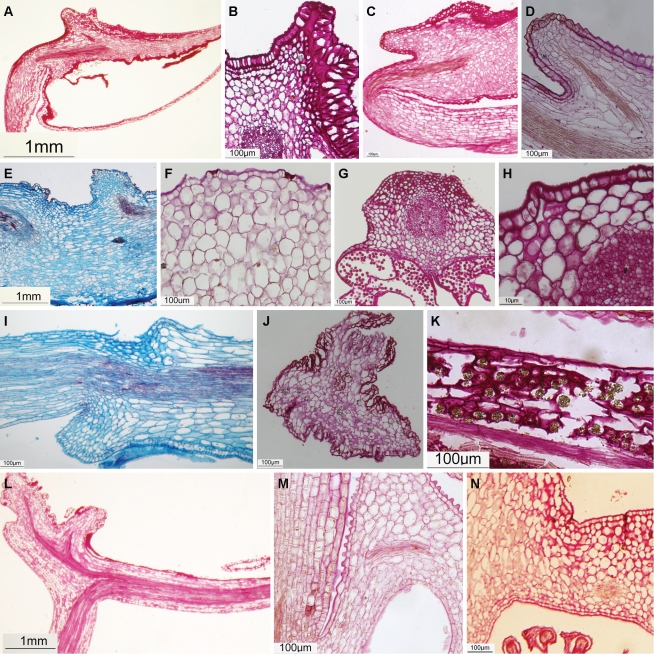Fig. 2.
Aspects of nectary tissues in nectar-producing Melastomataceae. (A) B. chlorantha: dorsal epidermis and parenchyma of anther strongly stains for carbohydrates. (B) B. chlorantha: large and continuous intercellular space under the epidermis rich in carbohydrates. (C) B. fuschisoides: dorsal epidermis and parenchyma of anther strongly stains for carbohydrates. (D) B. fuschisoides: the dorsal appendage supplied by a vascular bundle that diverges from the main bundle in the anther. (E) Huilaea ‘calyptrata’: dorsal appendage supplied by a vascular bundle that diverges from the main bundle in the anther. (F) H. ecuadoriensis: intercellular spaces below stomata. (G) B. microdon: large vascular bundle in the connective close to the epidermis and stained for carbohydrates. (H) B. ledifolium: stomata and intercellular spaces – a path to vascular supply? (I) B. confertum: vascular bundle in the connective paralleling the epidermis. (J) M. phlomoides: connective strongly ornamented, with many channels between lobes. (K) M. phlomoides: hypanthium rich in carbohydrates. (L) M. tomentosa: connective vascular supply. (M) M. hyemalis: vascular supply in the apex of the ovary. (N) C. alpinus: weak reaction for carbohydrates in the apex of the ovary.

